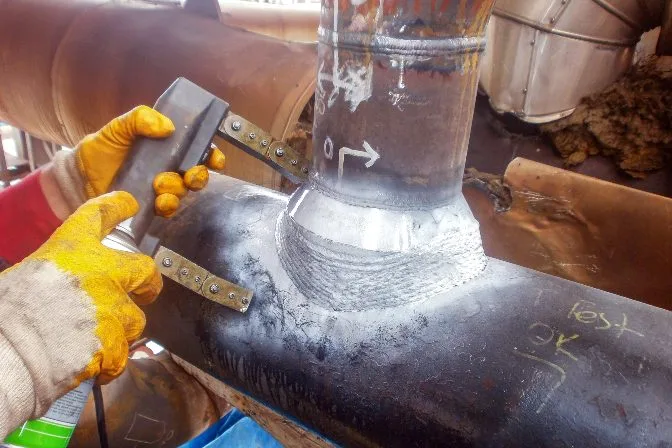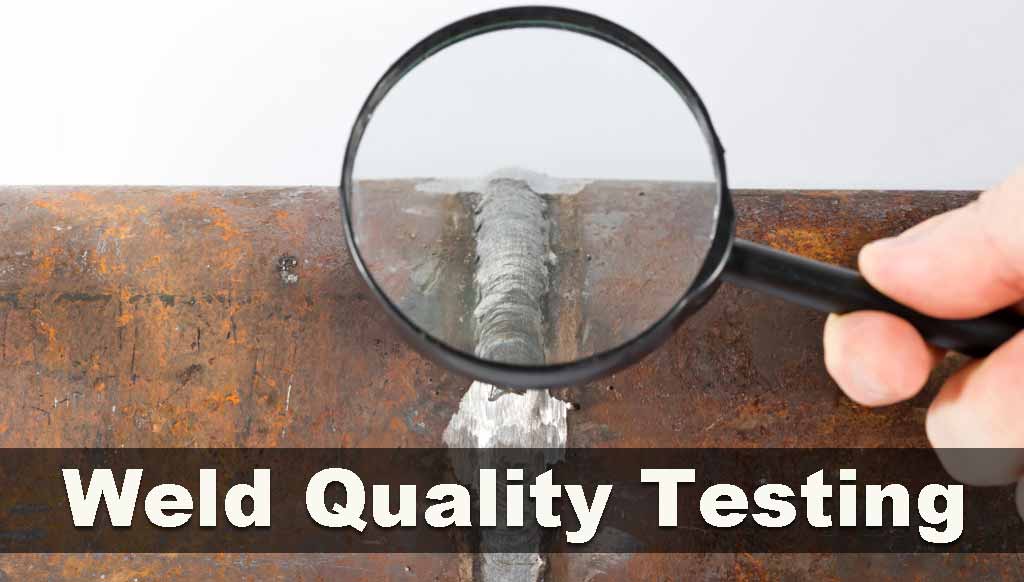Trick Factors to Take Into Consideration in Welding Evaluation for Quality Guarantee
Welding inspection is a critical aspect of high quality guarantee that incorporates numerous elements essential for ensuring the stability of welded structures. Trick considerations consist of the option of ideal assessment methods, the qualifications of personnel, and adherence to market criteria. The efficiency of various examination approaches-- such as aesthetic, ultrasonic, and radiographic screening-- can dramatically influence the results of top quality evaluations. Robust paperwork techniques are important for keeping traceability and facilitating constant enhancement. The interaction of these components elevates further inquiries about just how they can be maximized to improve total welding high quality.
Sorts Of Welding Procedures
Welding procedures incorporate a selection of methods used to sign up with materials, mostly steels, via the application of warmth, stress, or both. One of the most common kinds of welding procedures consist of arc welding, gas welding, resistance welding, and solid-state welding.
Arc welding, that includes methods like Shielded Metal Arc Welding (SMAW) and Gas Tungsten Arc Welding (GTAW), employs an electric arc to produce warmth for melting the base steels and filler products. Gas welding, usually described as oxy-fuel welding, uses a flame created by shedding a fuel gas with oxygen to melt the steels.
Resistance welding, including spot and seam welding, relies upon the heat created from electric resistance to bond products, generally made use of in auto production. Solid-state welding processes, such as rubbing welding and ultrasonic welding, sign up with products without melting them, utilizing mechanical stress and frictional warm.
Each welding procedure has certain applications, strengths, and limitations, making the selection of the appropriate method essential for accomplishing wanted weld top quality and efficiency. Welding Inspection Milwaukee. Understanding these procedures is important for ensuring reliable welding methods and sustaining quality guarantee in construction and production markets
Inspection Tools and techniques
To guarantee the stability and dependability of welded joints, various inspection methods and tools are utilized throughout the welding procedure. These techniques can be generally classified right into non-destructive testing (NDT) and harmful screening (DT) techniques. NDT techniques, which do not jeopardize the honesty of the welded element, include visual assessment, ultrasonic testing, radiographic testing, magnetic particle screening, and liquid penetrant screening.
Visual inspection is one of the most fundamental strategy, enabling the prompt recognition of surface area defects. Ultrasonic testing utilizes high-frequency sound waves to identify inner imperfections, while radiographic screening employs X-rays or gamma rays to picture the interior framework of welds. Magnetic bit testing works for spotting surface and near-surface discontinuities in ferromagnetic products, and liquid penetrant testing exposes surface-breaking defects by applying a tinted color or fluorescent penetrant.
On the various other hand, devastating screening includes physically testing the welded joint until failing to analyze its mechanical residential or commercial properties. Devices such as tensile screening makers, effect testers, and firmness testers are typically made use of in this context. By utilizing a mix of these strategies and tools, examiners can make sure the high quality and safety of bonded frameworks.

Relevance of Documents
In the world of welding assessment, appropriate documents works as an important backbone for high quality assurance and regulative conformity. Documentation incorporates Source a vast array of documents, including weld procedure specifications, examination reports, and non-destructive screening results. These documents not only offer a sequential account of the inspection procedure however also act as a referral for future analyses and audits.
Exact paperwork makes sure that all welding activities are proven and deducible, facilitating adherence to appropriate industry standards and codes. It comes to be essential throughout the review procedure, allowing stakeholders to analyze compliance with requirements and determine any inconsistencies or flaws. In addition, comprehensive records sustain efficient communication amongst staff member and outside auditors, fostering a society of openness and accountability.
On top of that, well-maintained documentation can significantly decrease the risk of costly rework or failings. By making sure that all required info is recorded and easily accessible, companies can simplify their quality control processes, ultimately enhancing the integrity of the welded check my blog frameworks. As a result, spending time and sources right into producing robust paperwork practices is not just a procedural demand but a critical crucial for achieving long-lasting success in welding operations.
Personnel Certifications and Training
Exactly how can organizations make certain the proficiency of their welding personnel? To preserve high criteria of high quality guarantee, it is important for organizations to buy comprehensive training programs tailored to the particular demands of the welding industry. Welding Inspection Milwaukee. This entails not only first training but likewise constant education to maintain personnel abreast of advancing modern technologies and methods
Organizations should develop clear criteria for workers credentials, including pertinent certifications and experience in different welding techniques. Utilizing certified welding assessors (CWIs) can boost the top quality of inspections, as these professionals possess the necessary knowledge to make sure and determine prospective flaws adherence to ideal techniques.
Along with technological abilities, companies ought to cultivate a culture of safety and conformity among their welding workers. Giving regular workshops and correspondence course can aid strengthen the significance of safety protocols and the implications of non-compliance.
Furthermore, organizations ought to carry out performance assessments and feedback devices to evaluate personnel competency gradually. By methodically dealing with training needs and promoting a dedication to quality, companies can improve their welding examination procedures, eventually bring about improved product honesty and client contentment.
Compliance With Industry Standards
Sticking to sector criteria is critical for guaranteeing the quality and safety of welding procedures. Compliance with well established requirements, such as those established by the American Welding Culture (AWS), American National Criteria Institute (ANSI), and International Company for Standardization (ISO), offers a framework for analyzing the stability of welded frameworks. These criteria incorporate different aspects of welding, consisting of material option, style requirements, and procedural strategies.
Welding assessments have to be conducted according to these standards to validate that the job fulfills the necessary quality requirements. This consists of visual examinations, non-destructive screening (NDT), and comprehensive documentation of findings. Guaranteeing conformity not only enhances the integrity of the welds however likewise minimizes threats connected with structural failings.
Moreover, adherence to industry standards fosters a society of security and expertise within the labor force. It establishes a criteria for efficiency and motivates continuous renovation with normal audits and training. Eventually, conformity is not just a regulatory need; it is a commitment to excellence that protects both employees and the atmosphere while delivering premium have a peek at this website welding items.

Final Thought

Welding examination is a critical facet of quality assurance that incorporates different factors crucial for ensuring the integrity of bonded frameworks.To make sure the honesty and integrity of welded joints, various inspection strategies and devices are utilized throughout the welding process.In the realm of welding assessment, correct documentation offers as a vital backbone for top quality assurance and regulative compliance.Welding examinations need to be performed in conformity with these standards to verify that the job meets the required high quality standards.In final thought, reliable welding examination for top quality assurance calls for a multifaceted approach that encompasses the choice of appropriate evaluation strategies, stringent adherence to market standards, and detailed documentation of results.